Abstract
Noncontingent reinforcement (NCR), a response-independent schedule for the delivery of reinforcement, has been found to be effective in reducing behavior when the reinforcer delivered is responsible for behavioral maintenance. In this study, dense and lean schedules of response-independent attention were compared to determine whether it is necessary to begin with a dense schedule before fading to a lean schedule, or whether treatment would be as effective using a lean schedule at the outset. The subjects were 5-year-old identical quadruplets diagnosed with mental retardation and pervasive developmental disorder who displayed destructive behavior that was maintained by social attention. NCR was selected partially because it is not very labor intensive and could be implemented by a single mother simultaneously with all 4 children. Using a combination multielement and multiple baseline design, it was found that (a) a dense schedule of response-independent reinforcement (i.e., fixed-time 10 s) resulted in immediate and dramatic reductions in destructive behavior with no evidence of an extinction burst, and (b) an equivalent reduction in destructive behavior was achieved with a lean schedule of response-independent reinforcement (fixed-time 5 min) only after a systematic fading procedure was implemented. The findings suggest that the effectiveness of NCR may be dependent on the use of a dense schedule initially, and that systematic fading can increase the effectiveness of a lean schedule.
Full text
PDF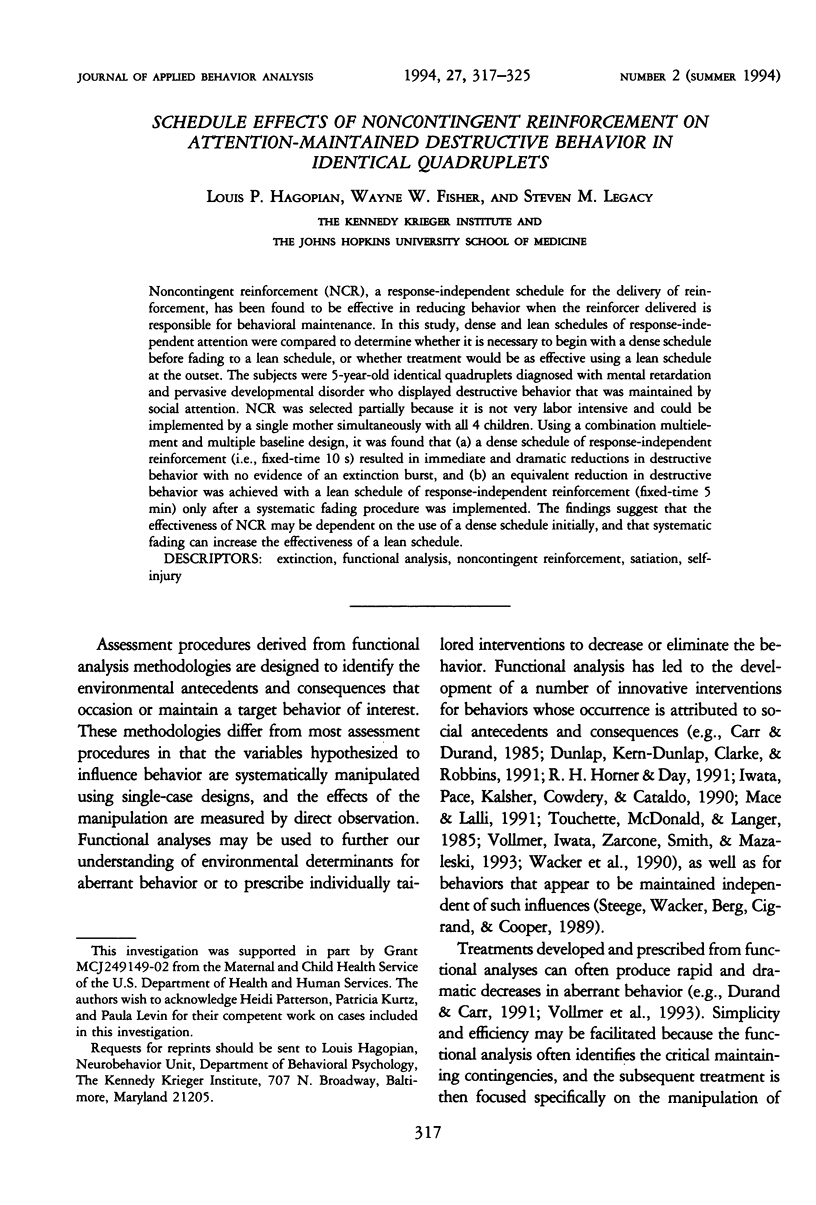

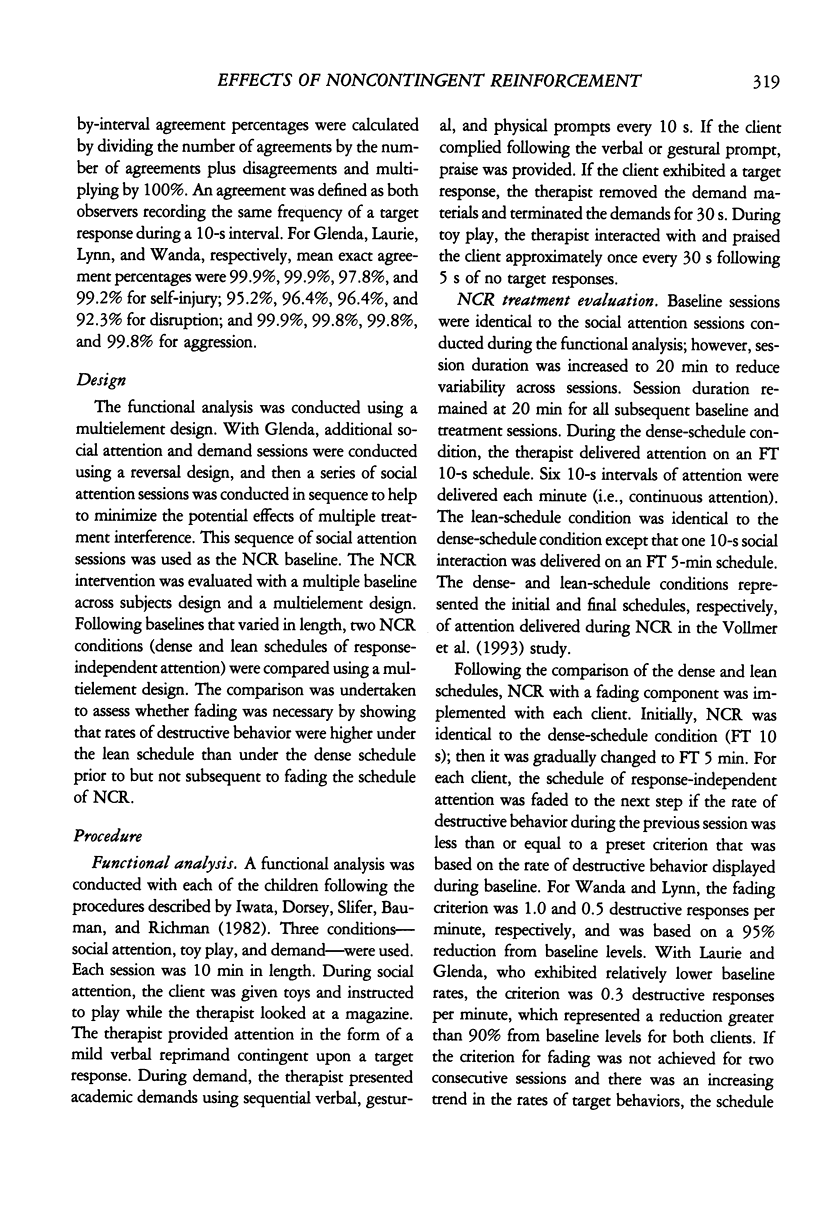
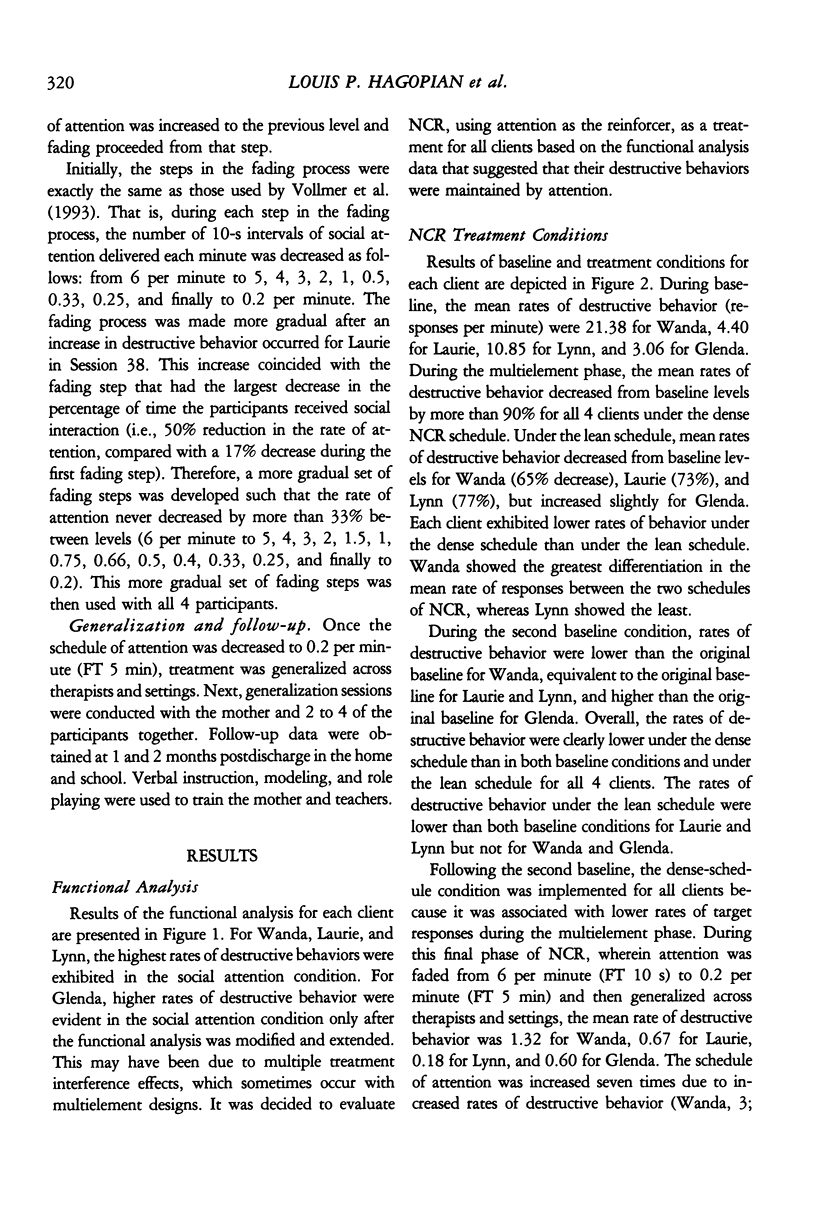
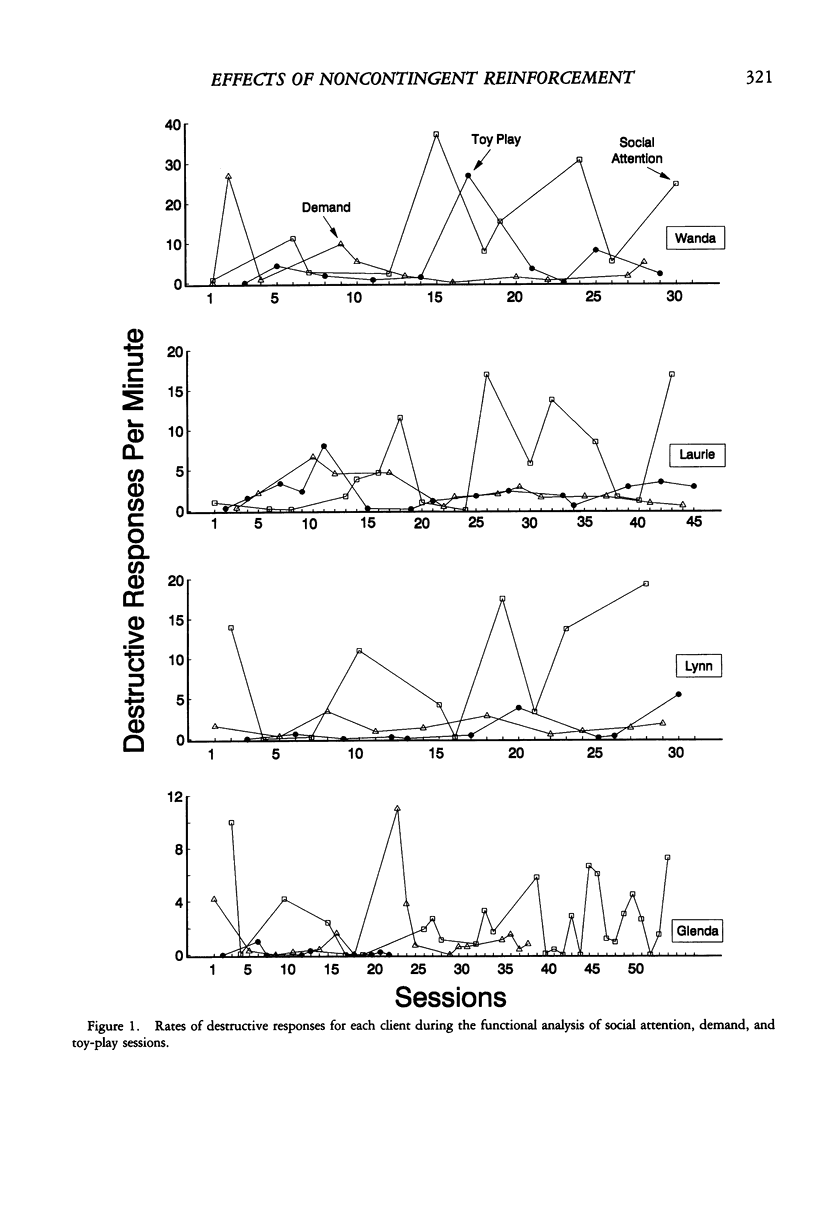
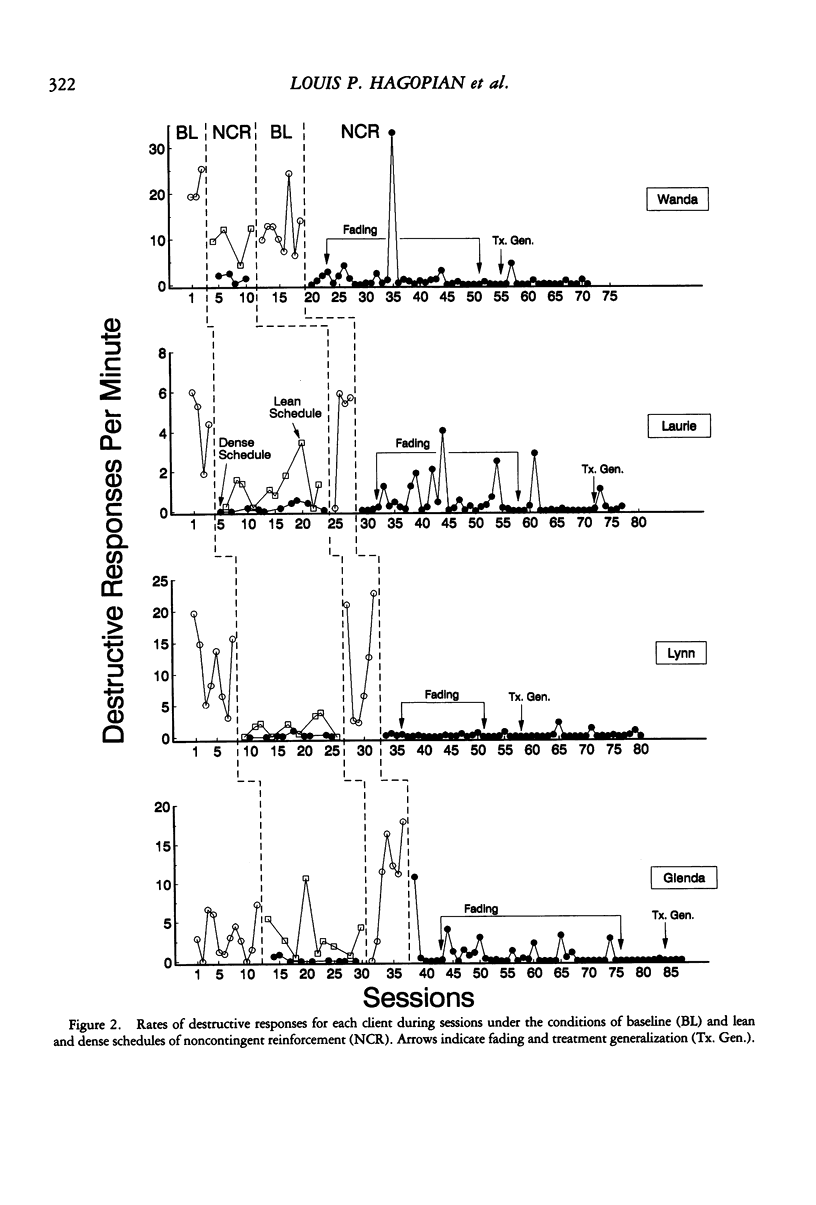
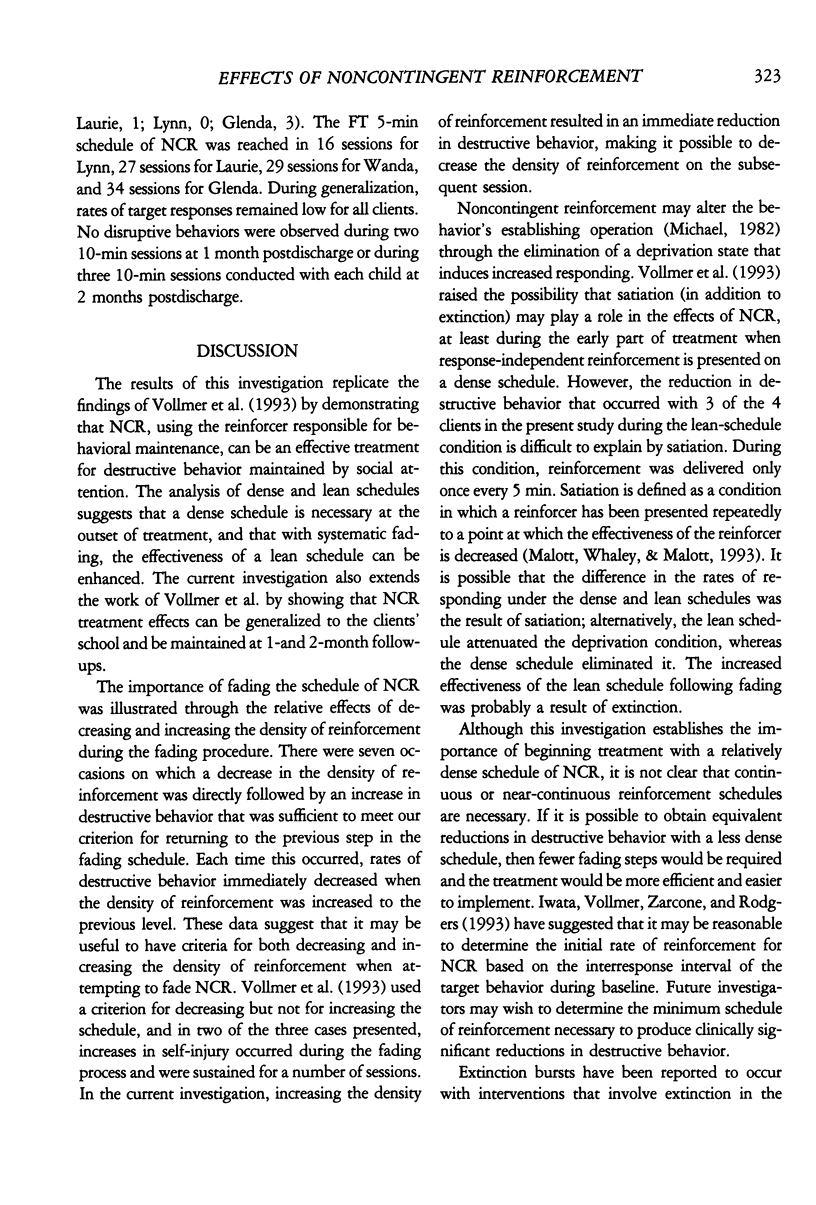
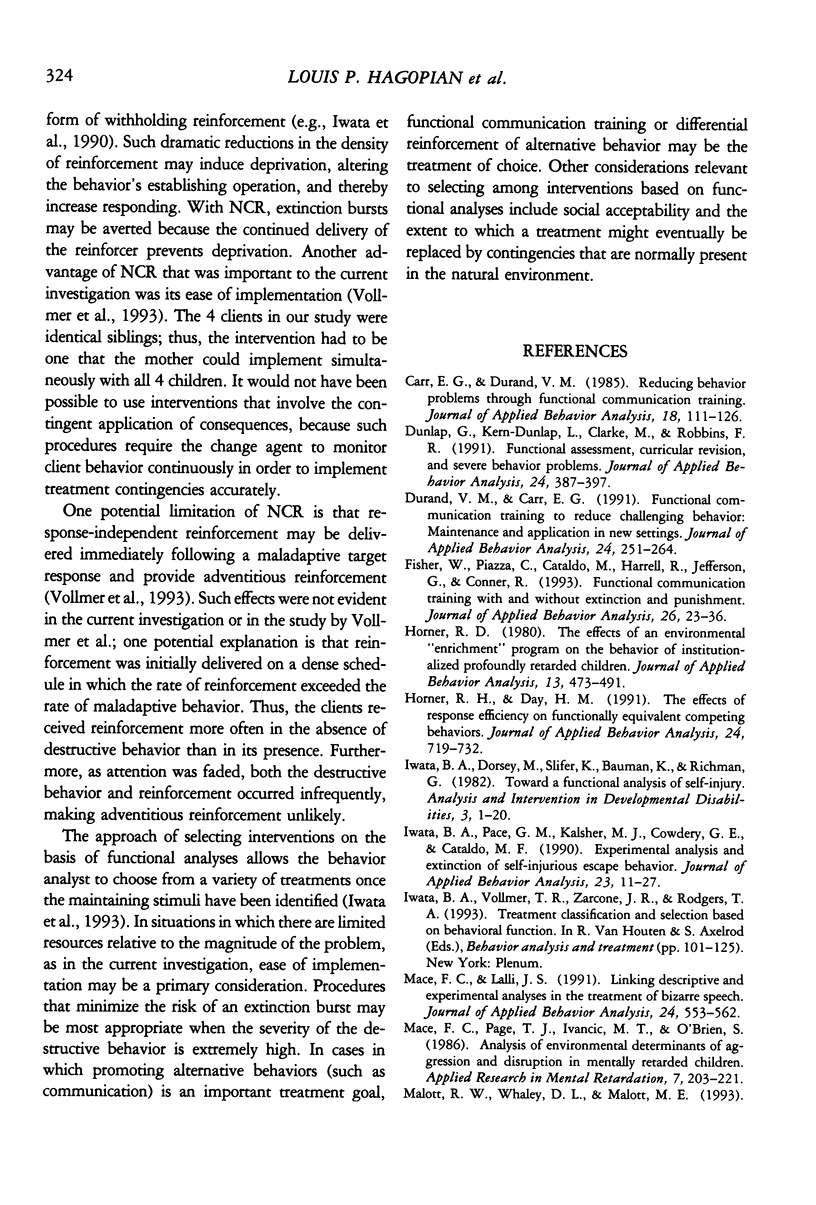

Selected References
These references are in PubMed. This may not be the complete list of references from this article.
- Carr E. G., Durand V. M. Reducing behavior problems through functional communication training. J Appl Behav Anal. 1985 Summer;18(2):111–126. doi: 10.1901/jaba.1985.18-111. [DOI] [PMC free article] [PubMed] [Google Scholar]
- Dunlap G., Kern-Dunlap L., Clarke S., Robbins F. R. Functional assessment, curricular revision, and severe behavior problems. J Appl Behav Anal. 1991 Summer;24(2):387–397. doi: 10.1901/jaba.1991.24-387. [DOI] [PMC free article] [PubMed] [Google Scholar]
- Durand V. M., Carr E. G. Functional communication training to reduce challenging behavior: maintenance and application in new settings. J Appl Behav Anal. 1991 Summer;24(2):251–264. doi: 10.1901/jaba.1991.24-251. [DOI] [PMC free article] [PubMed] [Google Scholar]
- Fisher W., Piazza C., Cataldo M., Harrell R., Jefferson G., Conner R. Functional communication training with and without extinction and punishment. J Appl Behav Anal. 1993 Spring;26(1):23–36. doi: 10.1901/jaba.1993.26-23. [DOI] [PMC free article] [PubMed] [Google Scholar]
- Horner R. H., Day H. M. The effects of response efficiency on functionally equivalent competing behaviors. J Appl Behav Anal. 1991 Winter;24(4):719–732. doi: 10.1901/jaba.1991.24-719. [DOI] [PMC free article] [PubMed] [Google Scholar]
- Iwata B. A., Pace G. M., Kalsher M. J., Cowdery G. E., Cataldo M. F. Experimental analysis and extinction of self-injurious escape behavior. J Appl Behav Anal. 1990 Spring;23(1):11–27. doi: 10.1901/jaba.1990.23-11. [DOI] [PMC free article] [PubMed] [Google Scholar]
- Mace F. C., Lalli J. S. Linking descriptive and experimental analyses in the treatment of bizarre speech. J Appl Behav Anal. 1991 Fall;24(3):553–562. doi: 10.1901/jaba.1991.24-553. [DOI] [PMC free article] [PubMed] [Google Scholar]
- Mace F. C., Page T. J., Ivancic M. T., O'Brien S. Analysis of environmental determinants of aggression and disruption in mentally retarded children. Appl Res Ment Retard. 1986;7(2):203–221. doi: 10.1016/0270-3092(86)90006-8. [DOI] [PubMed] [Google Scholar]
- Mazaleski J. L., Iwata B. A., Vollmer T. R., Zarcone J. R., Smith R. G. Analysis of the reinforcement and extinction components in DRO contingencies with self-injury. J Appl Behav Anal. 1993 Summer;26(2):143–156. doi: 10.1901/jaba.1993.26-143. [DOI] [PMC free article] [PubMed] [Google Scholar]
- Michael J. Distinguishing between discriminative and motivational functions of stimuli. J Exp Anal Behav. 1982 Jan;37(1):149–155. doi: 10.1901/jeab.1982.37-149. [DOI] [PMC free article] [PubMed] [Google Scholar]
- Steege M. W., Wacker D. P., Berg W. K., Cigrand K. K., Cooper L. J. The use of behavioral assessment to prescribe and evaluate treatments for severely handicapped children. J Appl Behav Anal. 1989 Spring;22(1):23–33. doi: 10.1901/jaba.1989.22-23. [DOI] [PMC free article] [PubMed] [Google Scholar]
- Touchette P. E., MacDonald R. F., Langer S. N. A scatter plot for identifying stimulus control of problem behavior. J Appl Behav Anal. 1985 Winter;18(4):343–351. doi: 10.1901/jaba.1985.18-343. [DOI] [PMC free article] [PubMed] [Google Scholar]
- Vollmer T. R., Iwata B. A., Zarcone J. R., Smith R. G., Mazaleski J. L. The role of attention in the treatment of attention-maintained self-injurious behavior: noncontingent reinforcement and differential reinforcement of other behavior. J Appl Behav Anal. 1993 Spring;26(1):9–21. doi: 10.1901/jaba.1993.26-9. [DOI] [PMC free article] [PubMed] [Google Scholar]
- Wacker D. P., Steege M. W., Northup J., Sasso G., Berg W., Reimers T., Cooper L., Cigrand K., Donn L. A component analysis of functional communication training across three topographies of severe behavior problems. J Appl Behav Anal. 1990 Winter;23(4):417–429. doi: 10.1901/jaba.1990.23-417. [DOI] [PMC free article] [PubMed] [Google Scholar]


